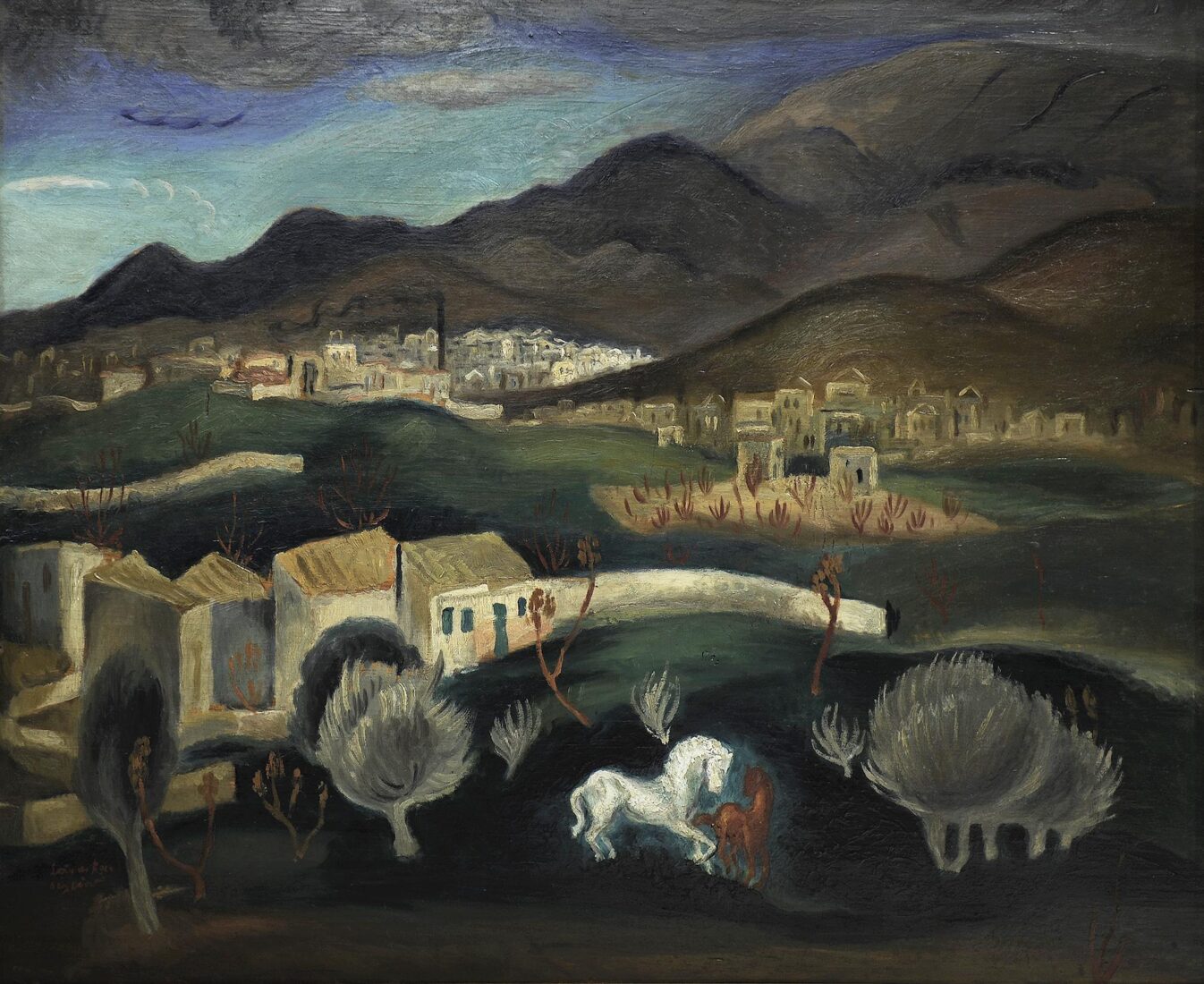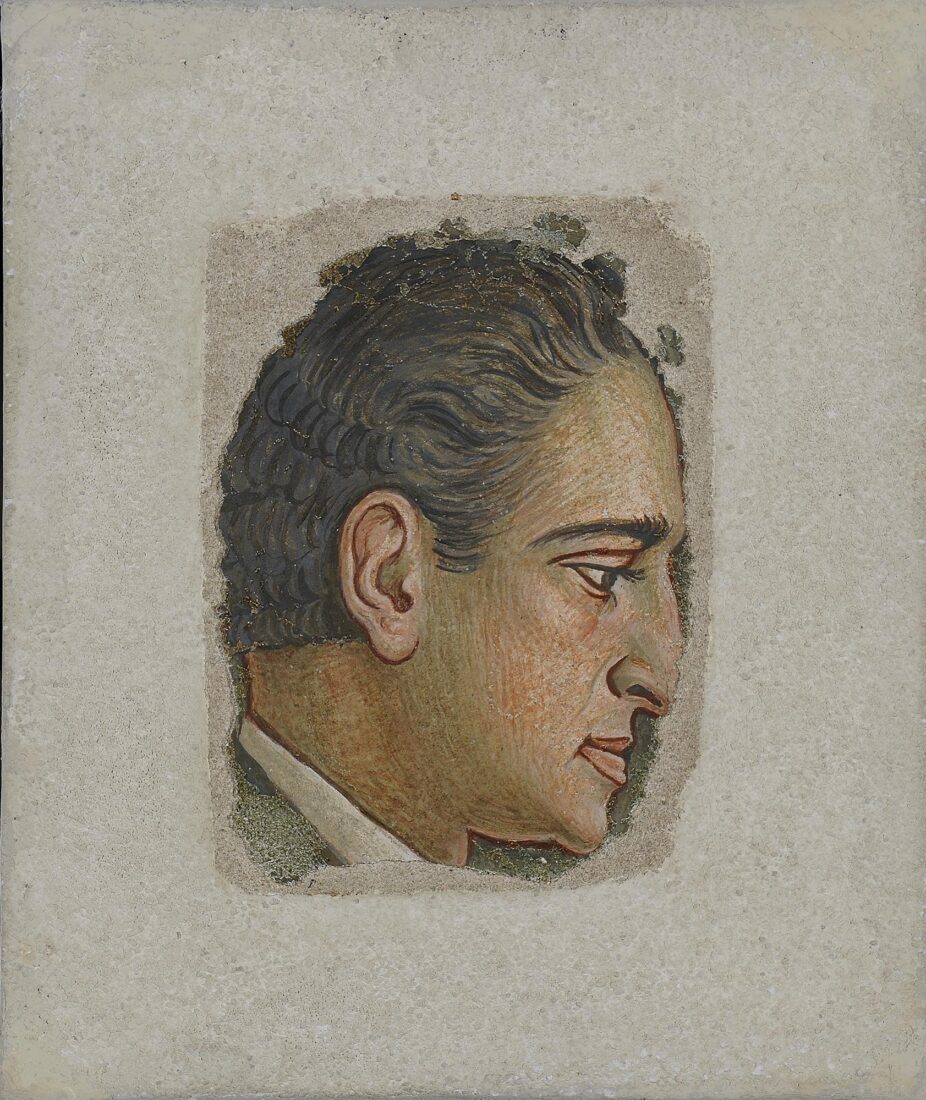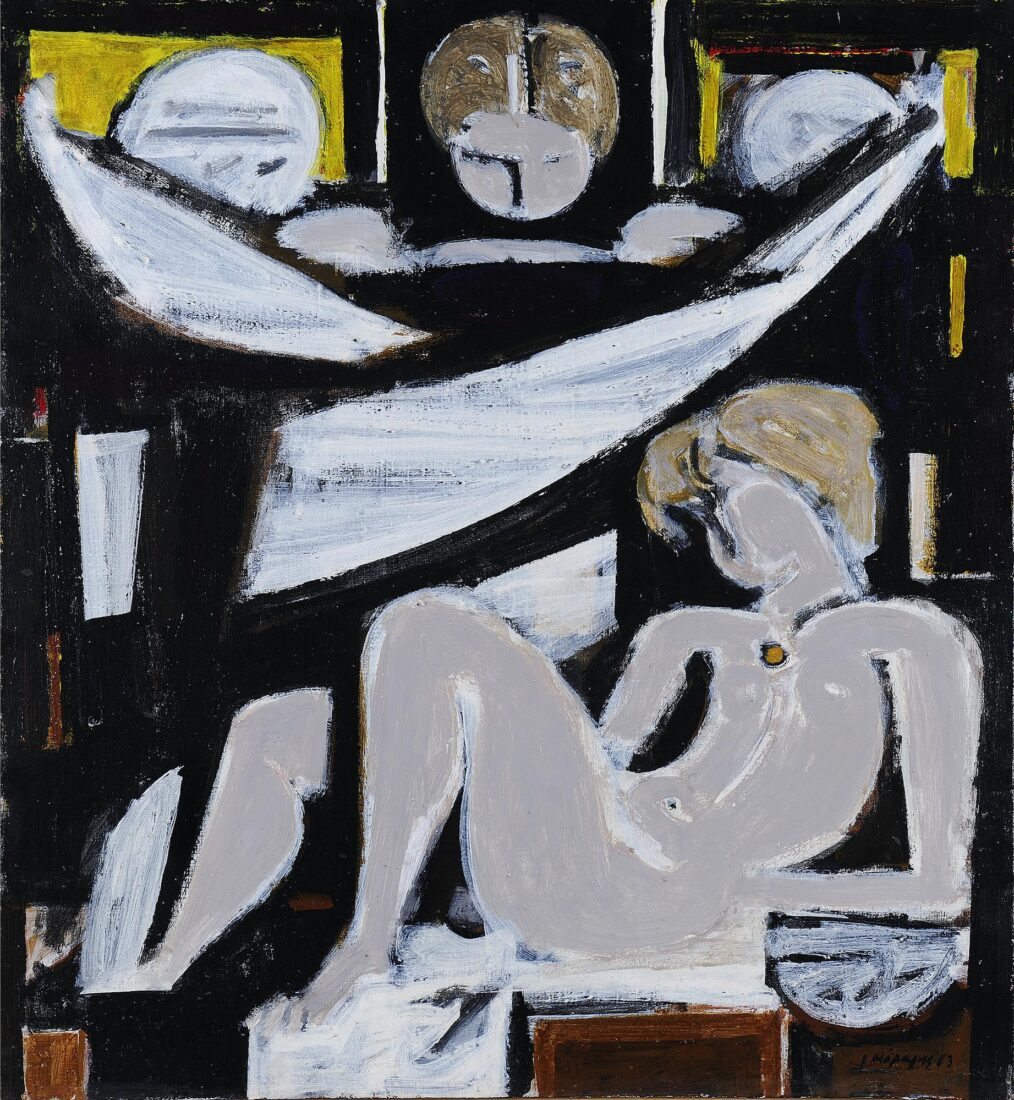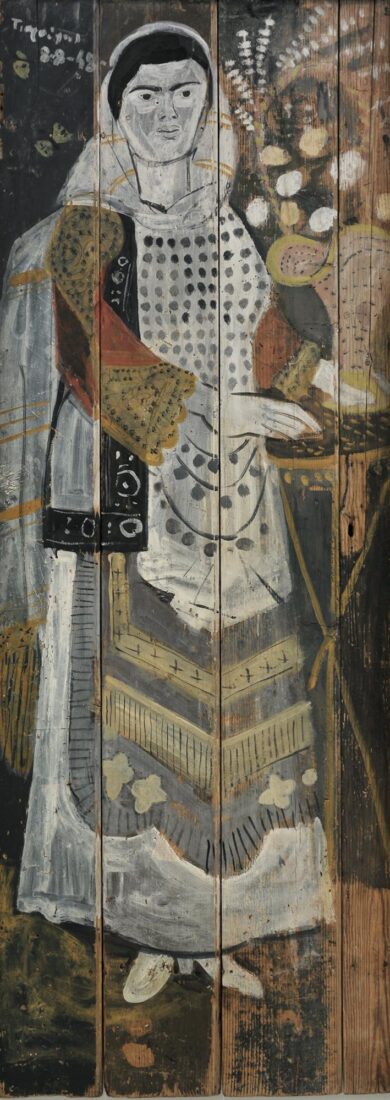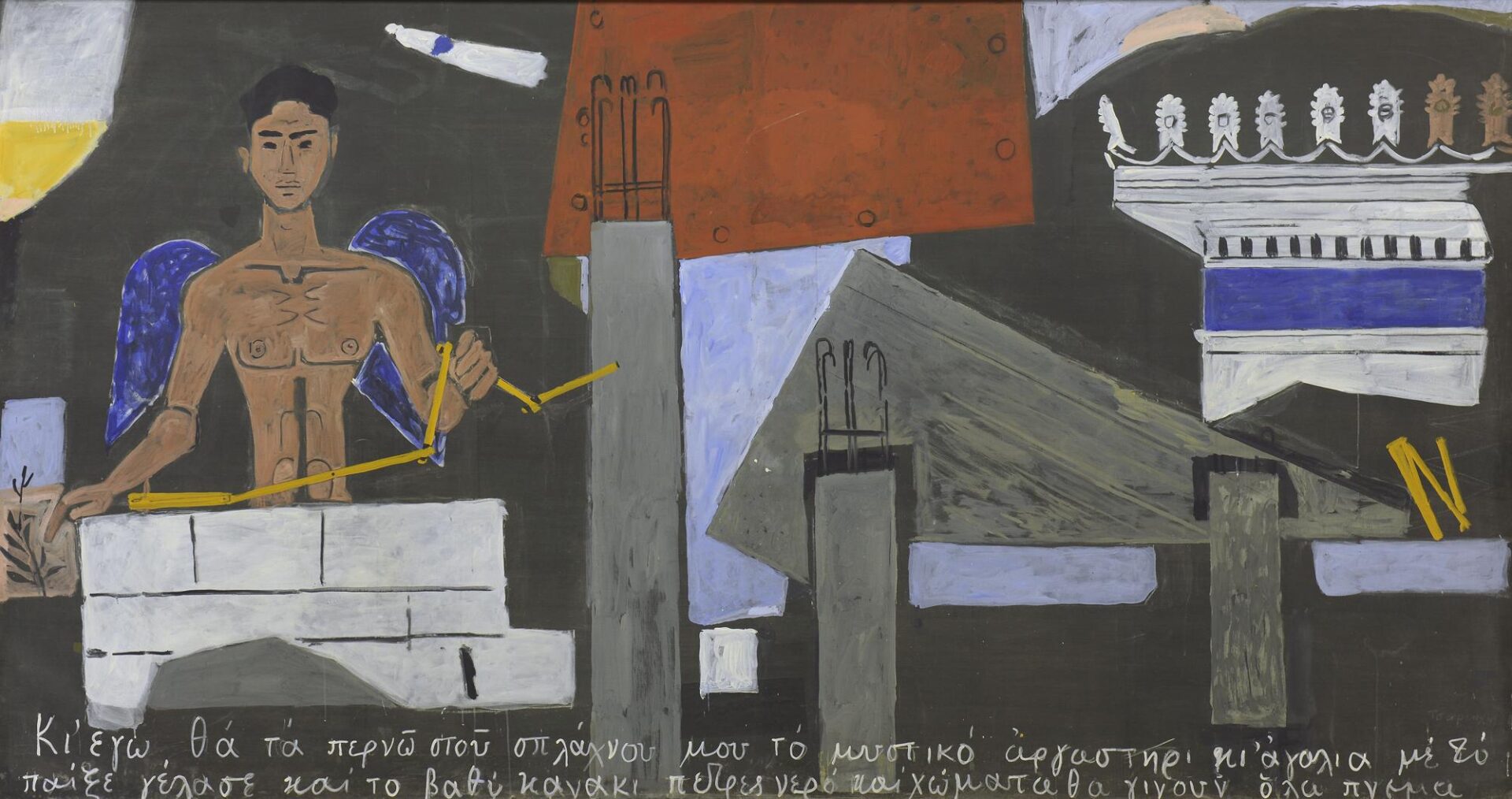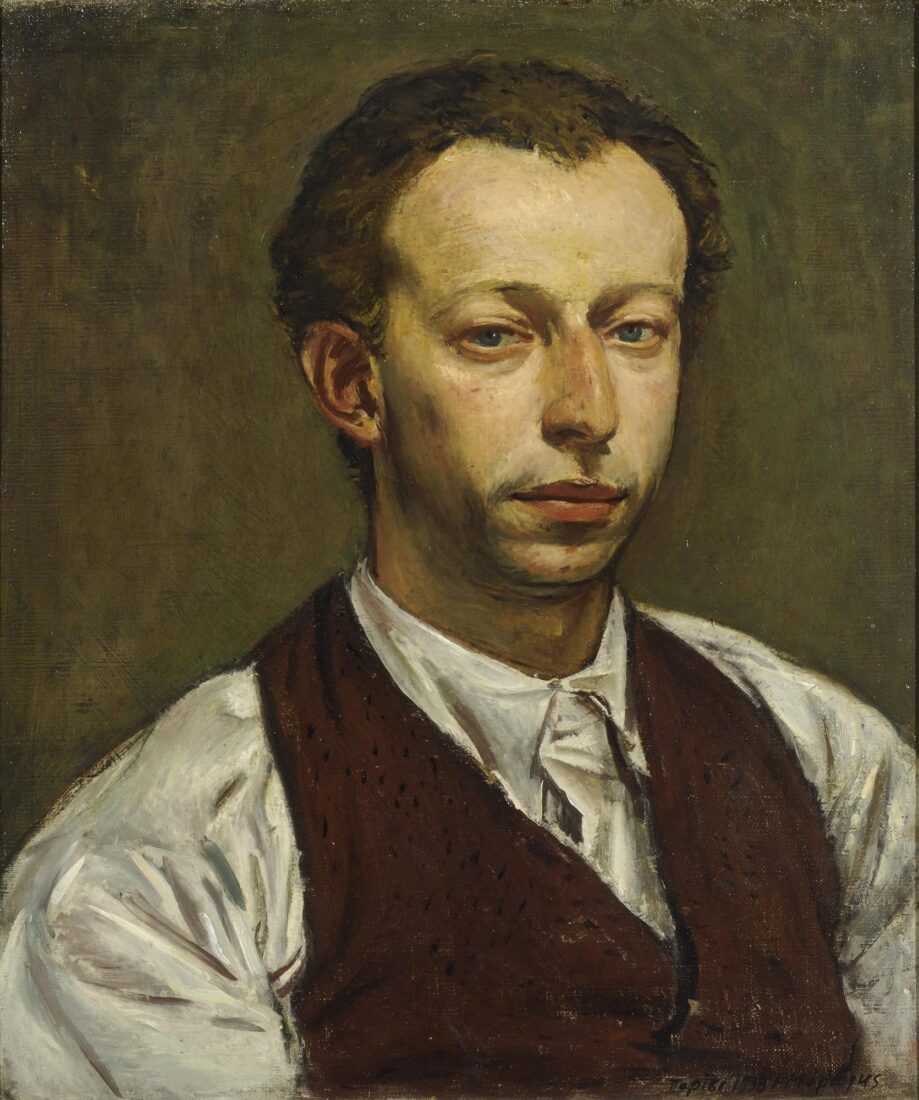

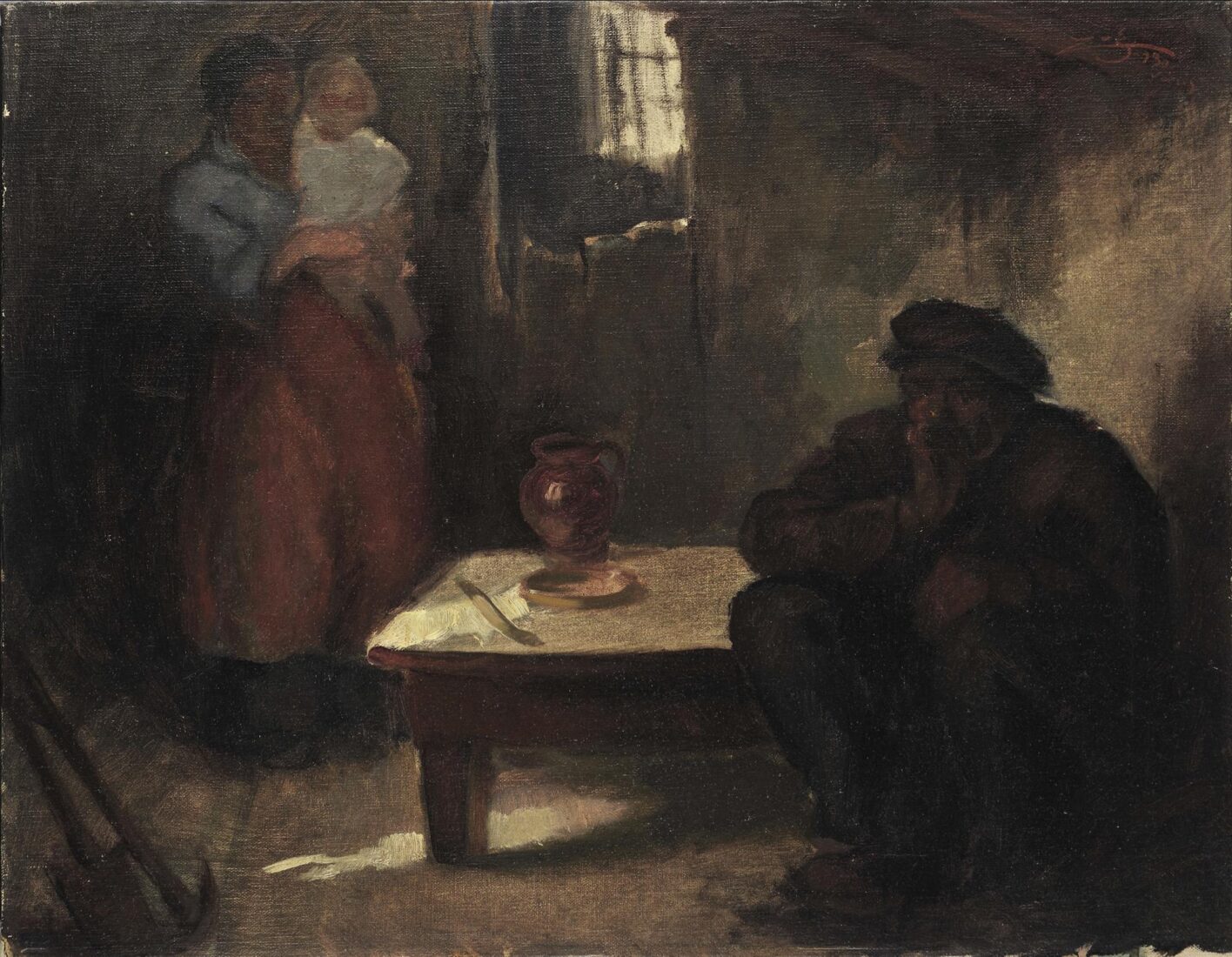
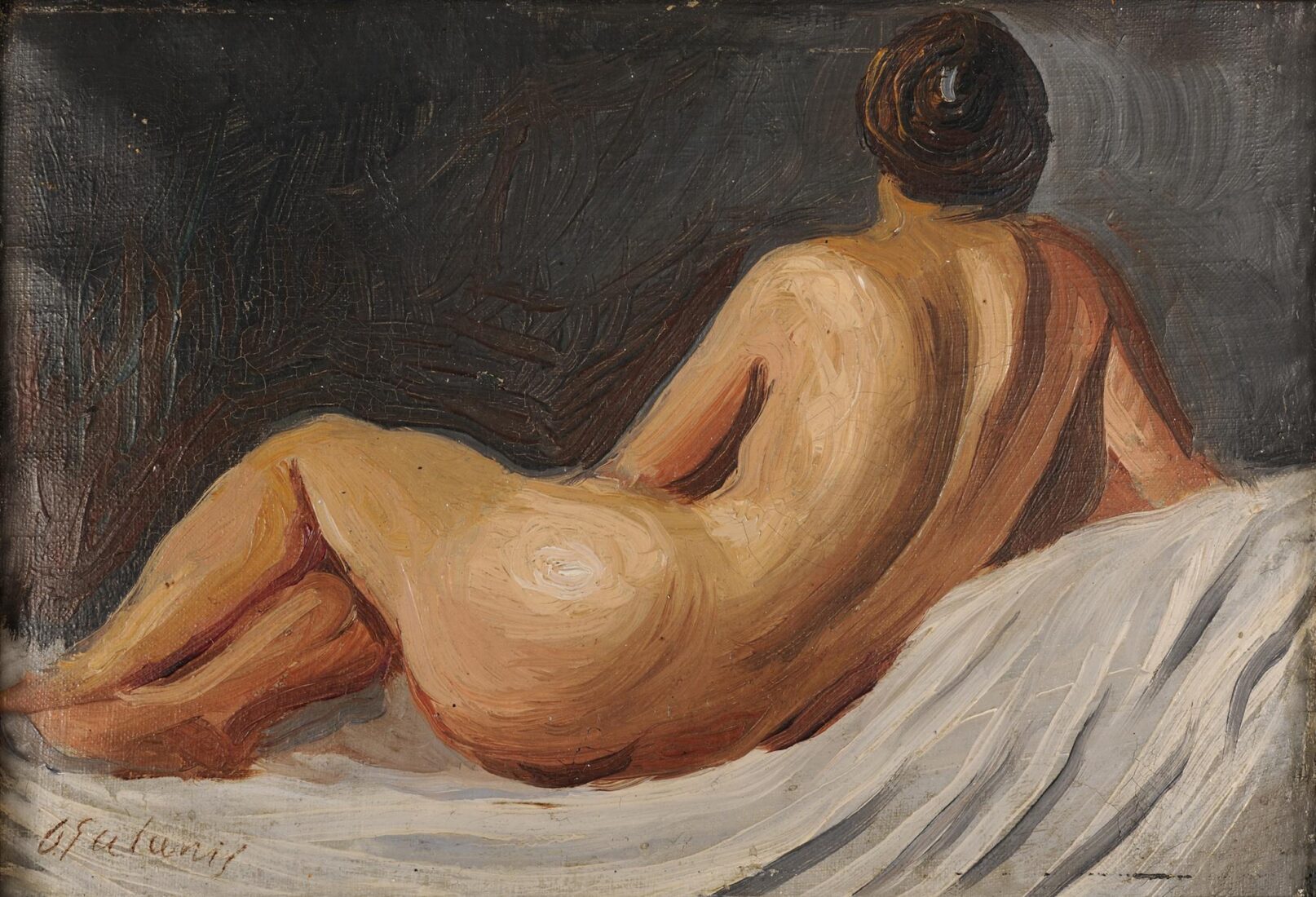
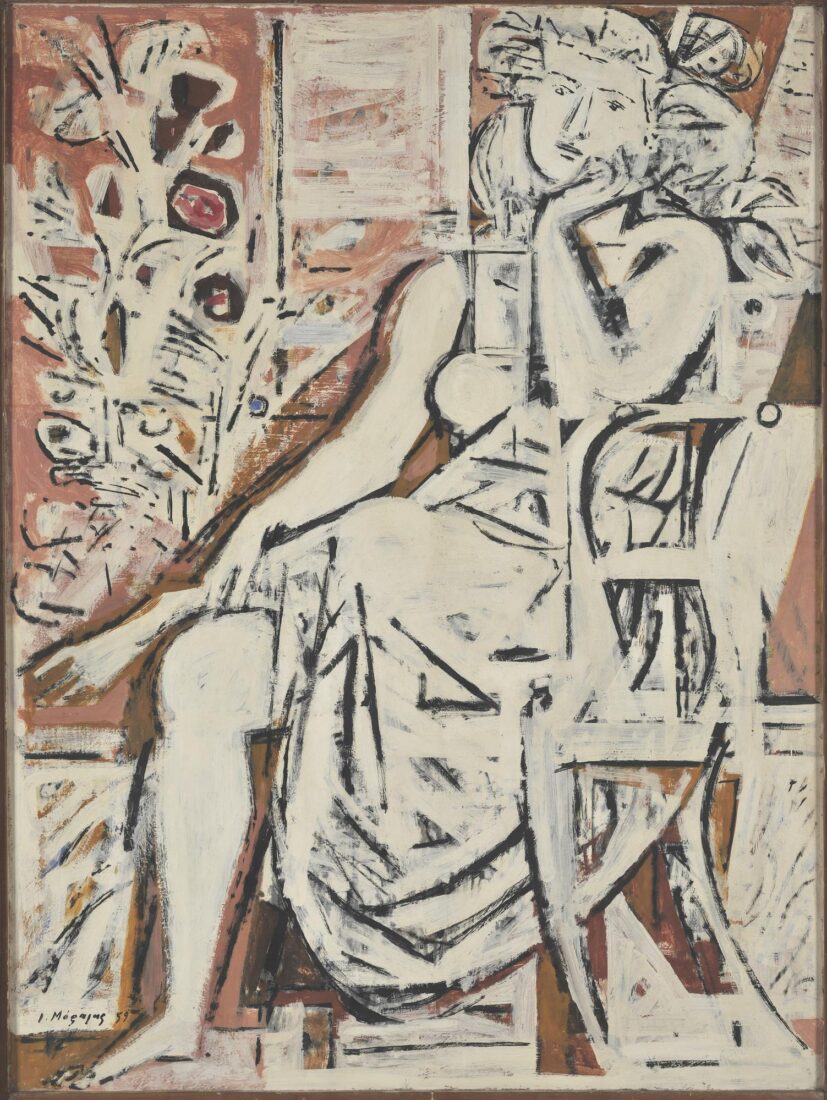
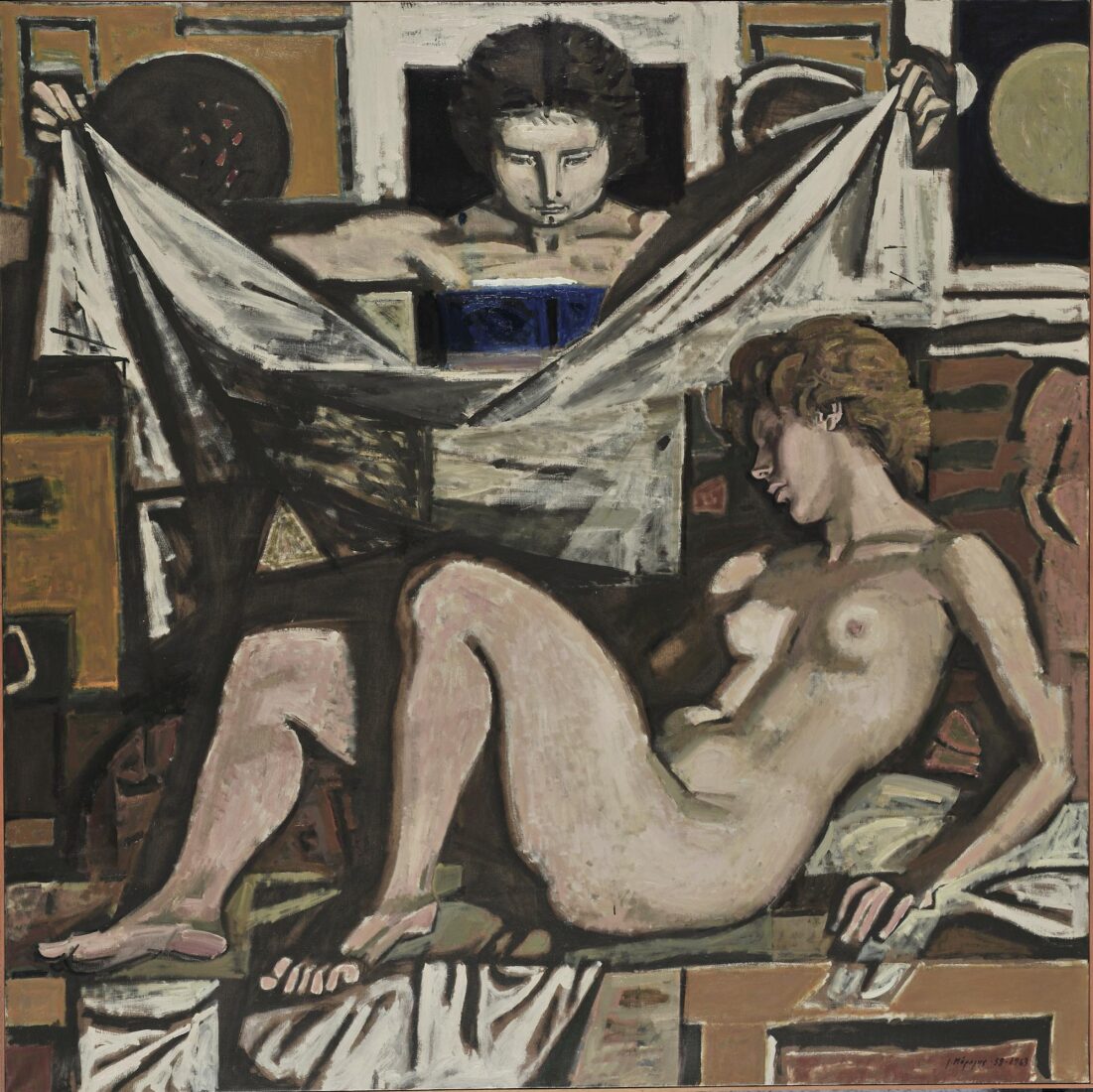
Funeral Composition III” is yet another of the artist’s imposing funeral compositions. A nude girl, dead or dying, is lying in Danae’s pose, used by Renaissance* artists, such as Tiziano. An angel with black wings is about to cover her with a white sheet-shroud. Here, too, the depthless setting is defined by vertical and horizontal lines. Every element in the composition has been arranged into geometrical shapes. Modelling once again follows the Byzantine manner. A dark foundation layer, lighter skin tones, highlights. Brown, sienna, ochre and white prevail. The classical mood, the emotional distance – that is, the artist not expressing his feelings – monumentality, silence, sober sorrow, a meditation on love and death, all contribute to a true masterpiece.
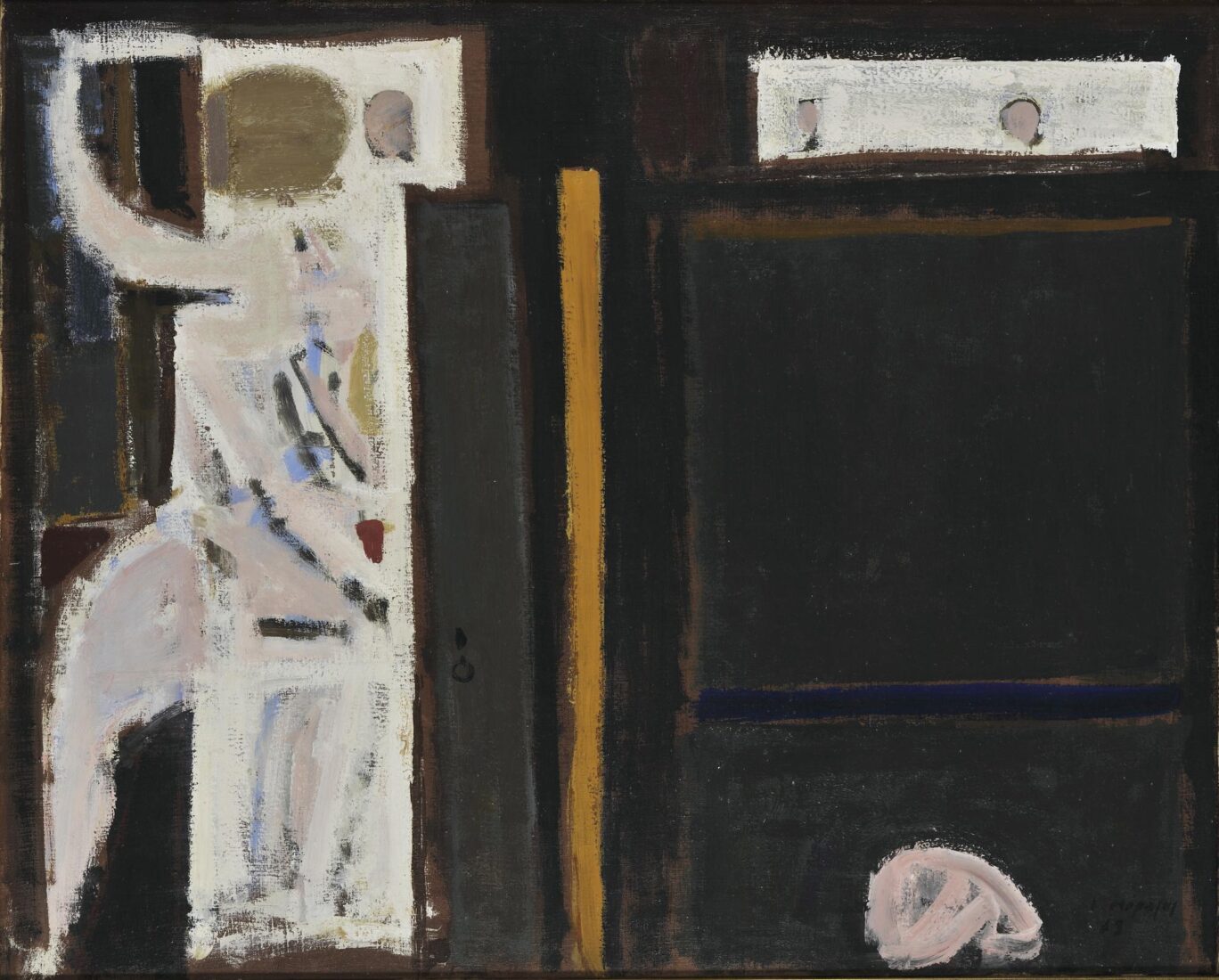
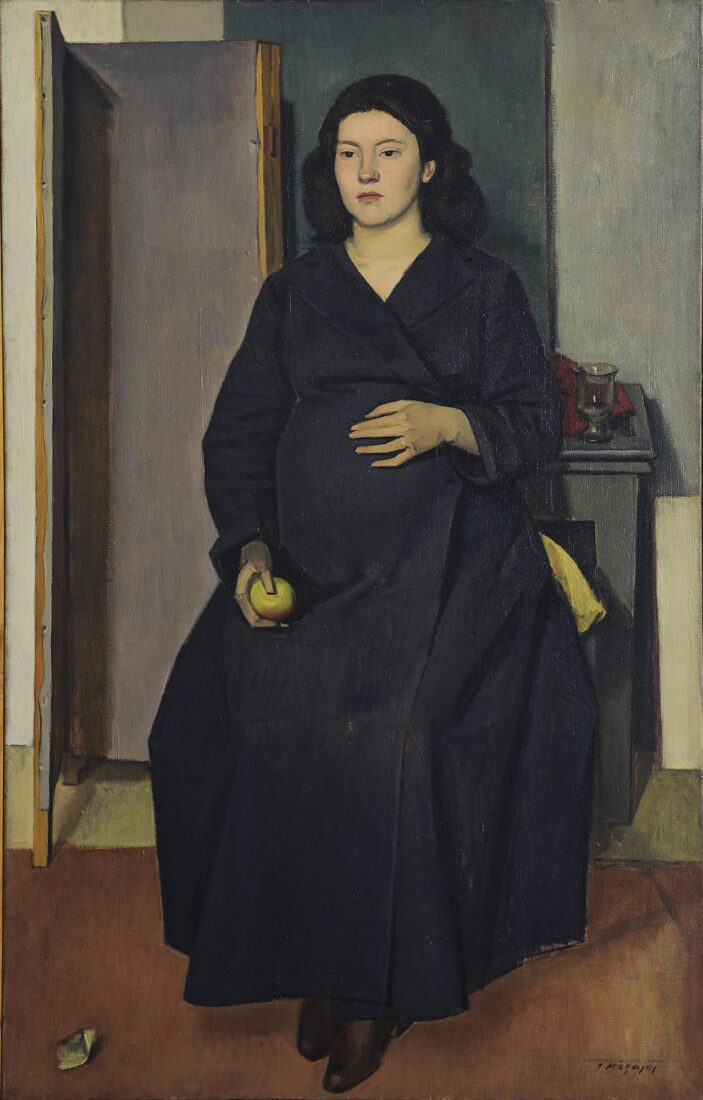
The “Pregnant Woman” portrays the sculptor Buba Lymberaki, now the artist’s wife, carrying his son. She is seated in a setting without depth, defined by planes parallel to the painted surface. These are characteristic of classical art. The pregnant woman is dressed in an austere black robe with violet tones. In her right hand she is holding an apple, a symbol of fertility, while her left hand rests on her womb in a protective gesture, emphasising the late state of her pregnancy. Her eye, hypnotized, focuses on infinity as if contemplating the mystery of the life she is carrying. The way the floor has been rendered, the geometrical arrangement of the background – in which vertical lines prevail –, the unadorned geometrical articulation of the figure, economy in the colour composition, all these traits make this a classical painting. Never ceasing to be the full-body portrait of an individual, indeed a loved one, the Pregnant Woman becomes a timeless symbol of fertility. Also one of the markings of classical art, another admirable quality of Moralis’ art is the artist’s emotional distance from his subject, even though it is one of great intimacy.
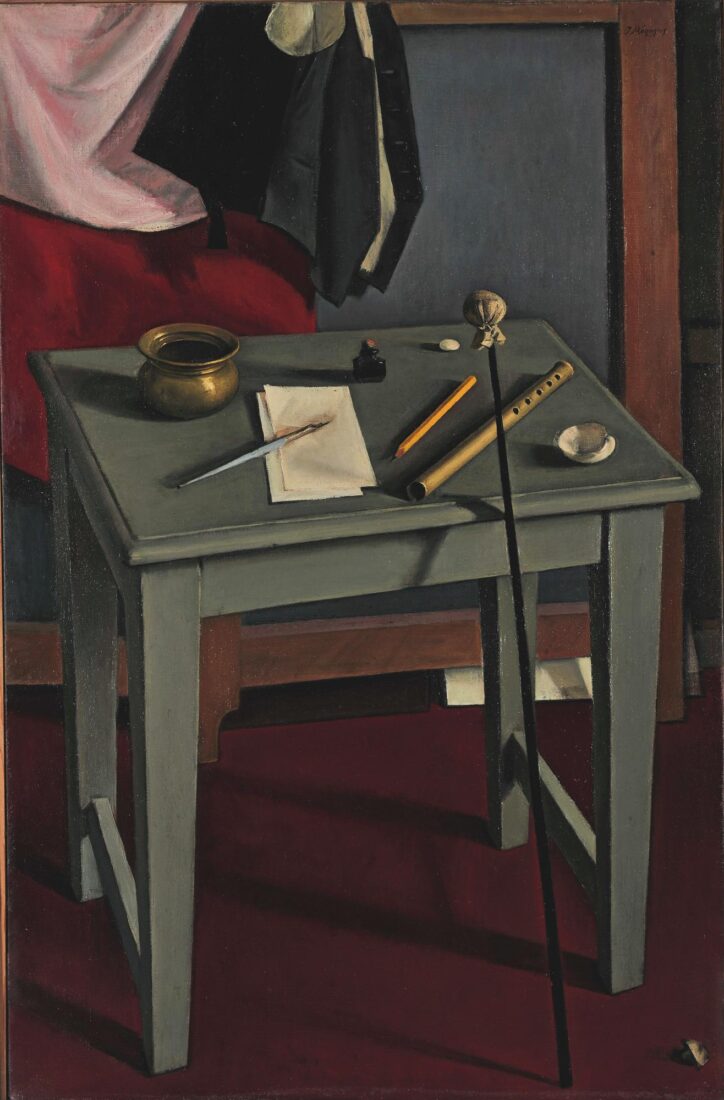
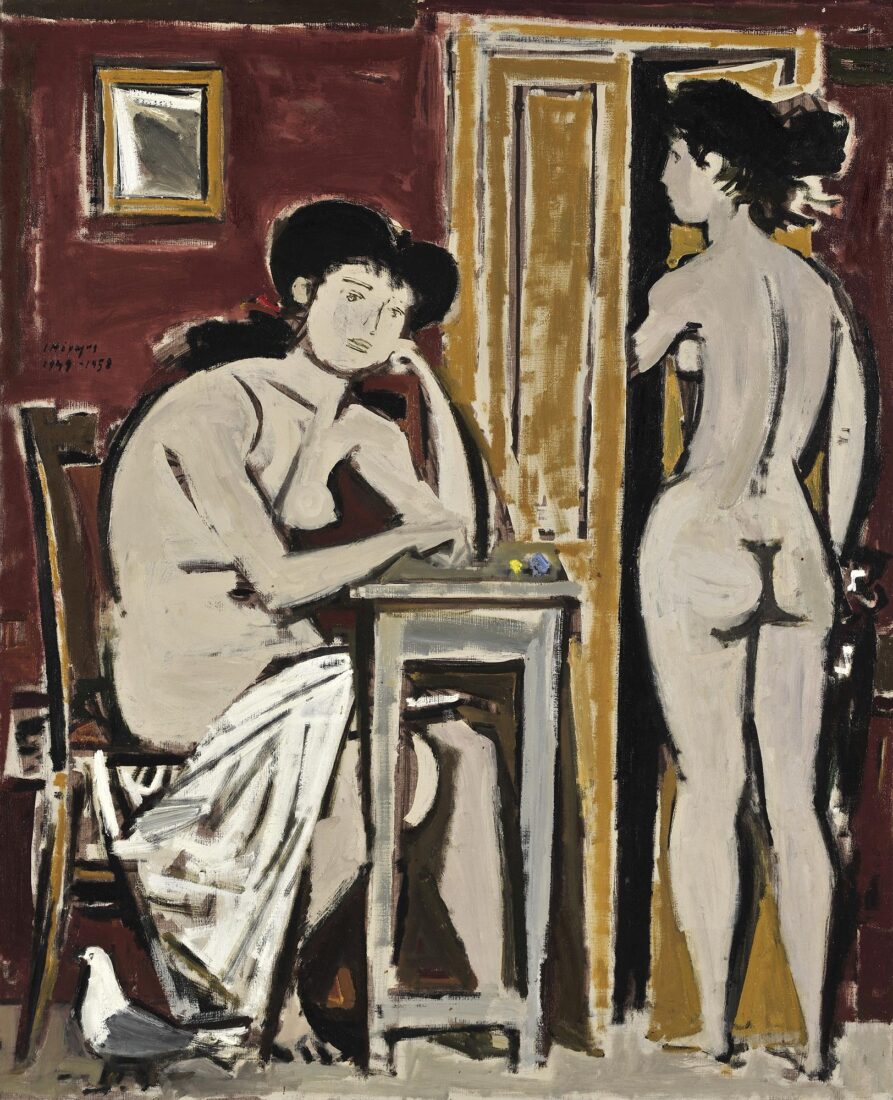
According to Yannis Moralis himself, “”Composition I”” introduces the artist’s series of Funeral Compositions. He has revealed that he dreamt this scene and captured it on paper as soon as he woke up so that he could take it up at a later time. Funeral Compositions are inspired by Attic funerary stelae, with which they share certain characteristics: In stelae, two or three figures are depicted — one of them seated, identified with the deceased — also in a depthless setting. Their pose is meditative, expressive of restrained sorrow. In Moralis’ funeral compositions, women of a young age prevail, as they do throughout his work. The “”Mystery Villa”” in Pompey is another of his sources of inspiration.
Here, the setting is defined by the door frame and a mirror hanging on the wall. The depth is just enough for the table to fit, against which the seated, meditative and sorrowful girl is leaning. The other nude girl has already half-opened the door, about to leave. This is a hint of death. The work has been sketched in forceful, assured outlines, which moreover serve to suggest volume, as chiaroscuro is totally absent. The colour harmony of the cherry-red wall and the yellowy ochre door, against which the light pink flesh of the nude bodies projects, is effective and free of all superficiality.
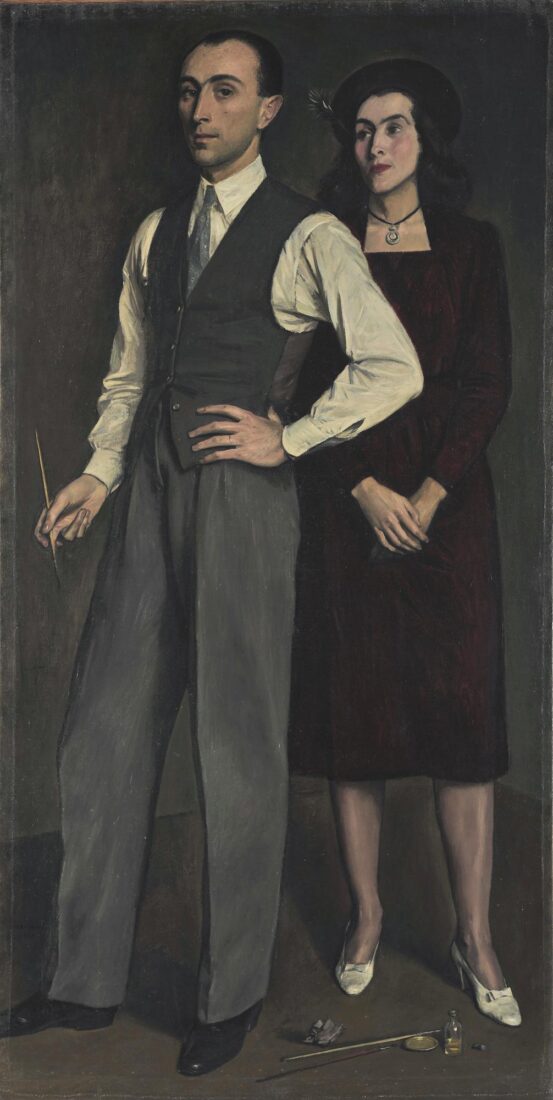
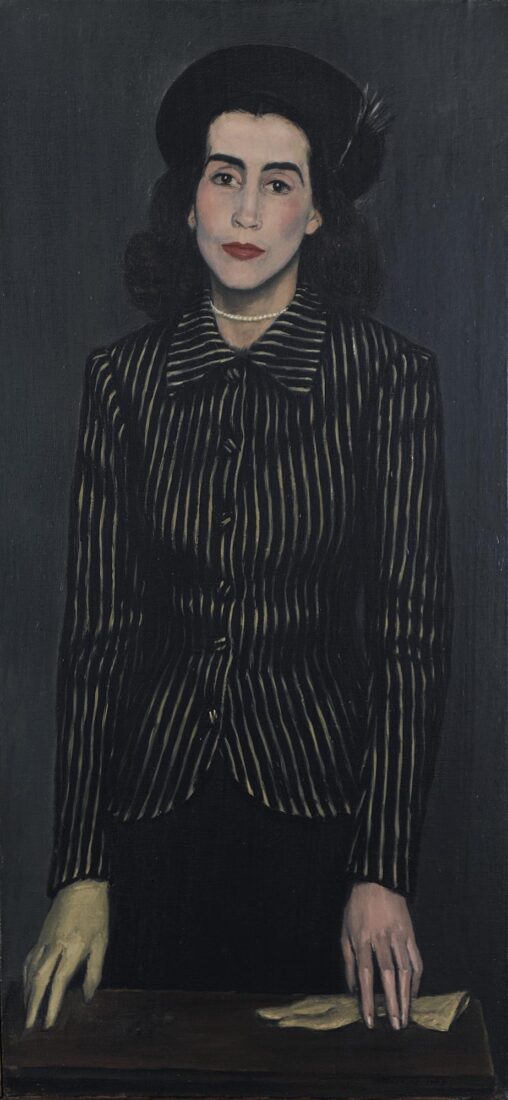
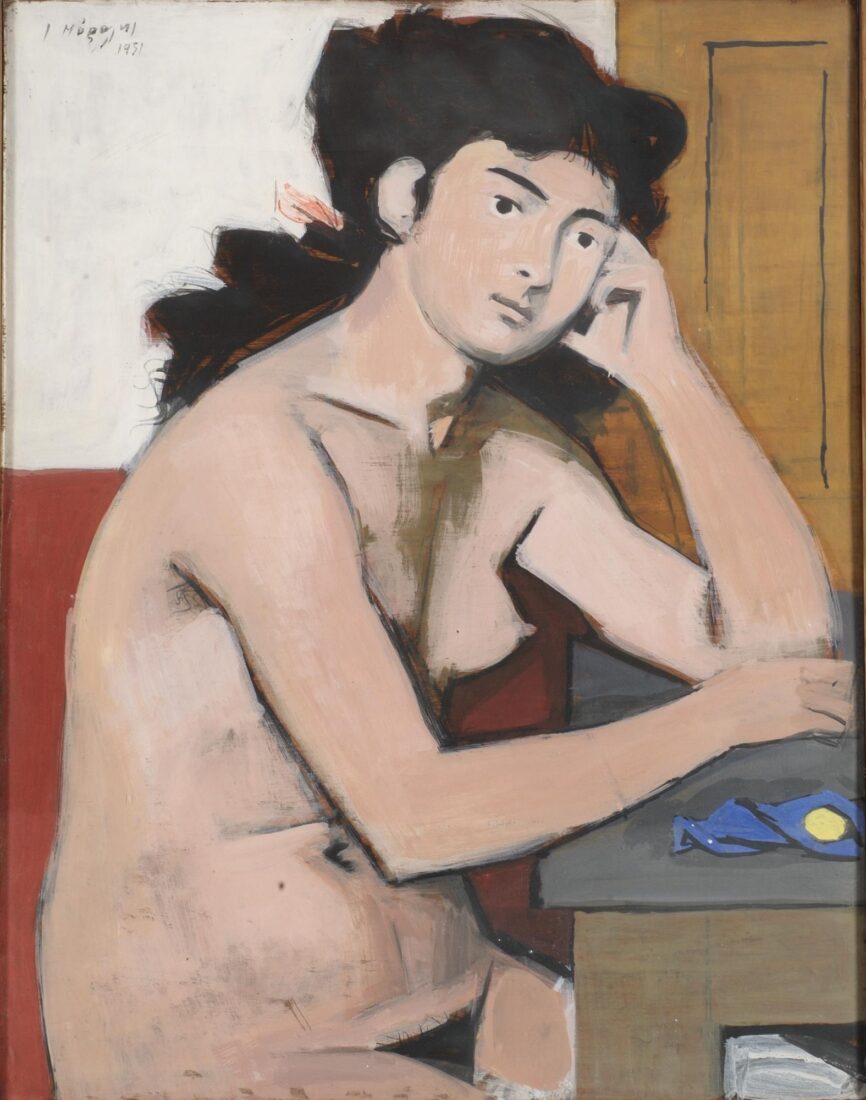
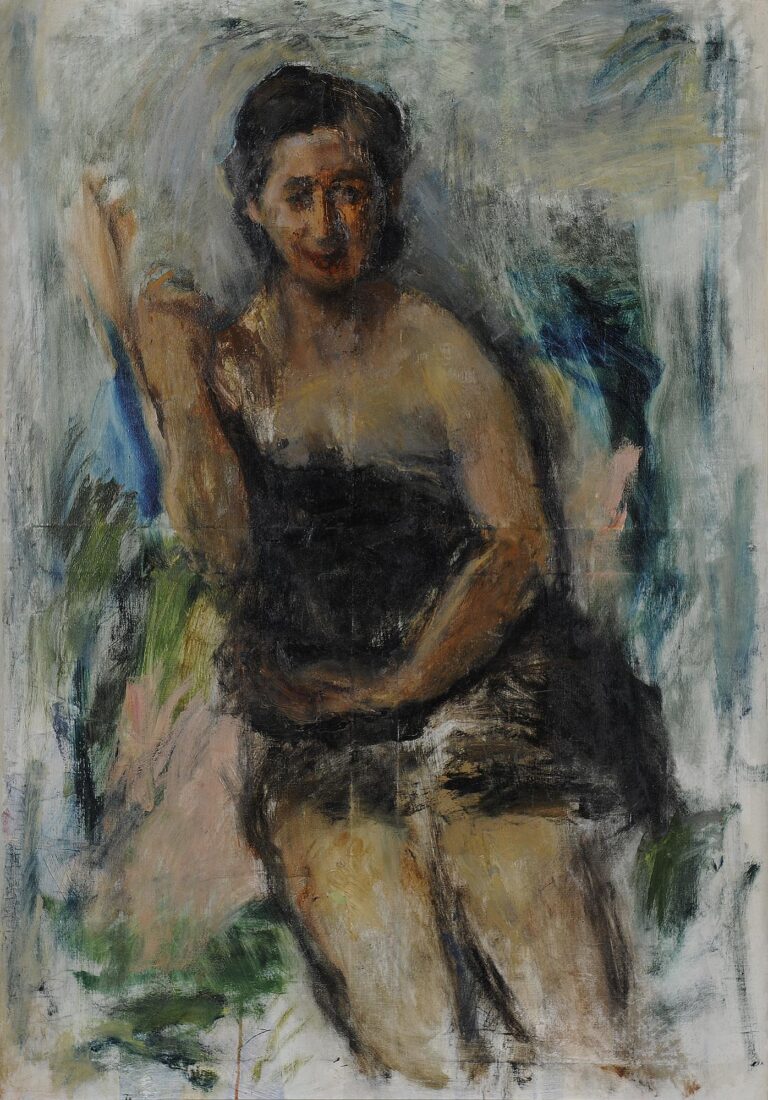
Giorgos Bouzianis studied and spent the greater part of life in Munich, where his work received acclaim. He was a member of the postwar generation of Expressionists, but his oeuvre is primarily associated with the independent Expressionists such the Austrian Oskar Kokoschka and the French Chaim Soutine. Although he painted other subjects including still lifes and landscapes, the human figure predominated in his work. Through strong expressive distortions and a style resembling a palimpsest, Bouzianis succeeded in expressing existential angst, human destiny, the final deterioration and death. His figures are drawn with broad brushstrokes that are digested in a confusion of color. The osmosis of figure and space is so powerful that the figure appears as if it is being born of a painful chromatic hell, of a disruption that betrays a powerful psychic and emotion charge. Bouzianis employs unusual and highly individual color harmonies. His style presages that of de Kooning and other American Abstract Expressionist painters.
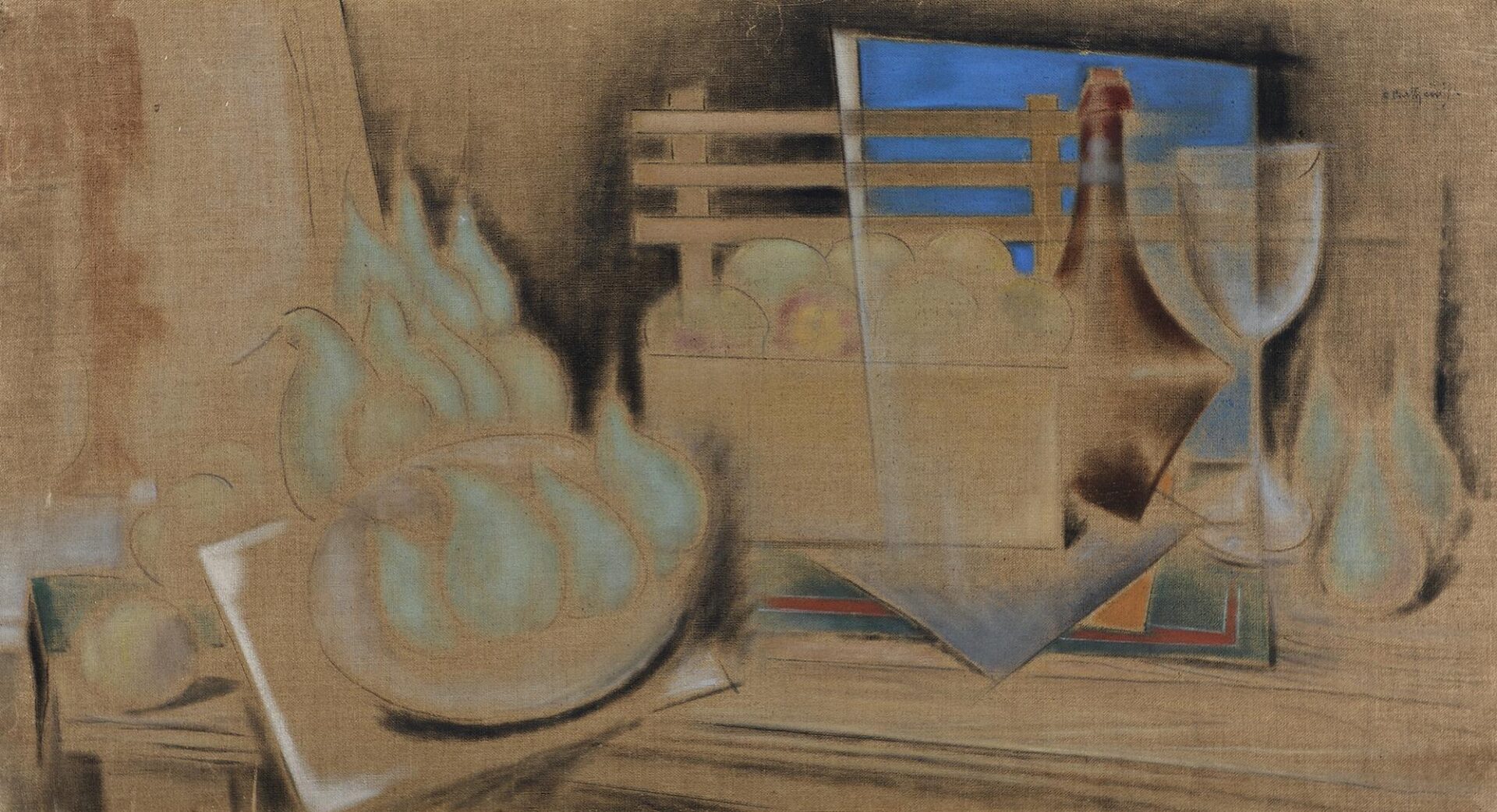
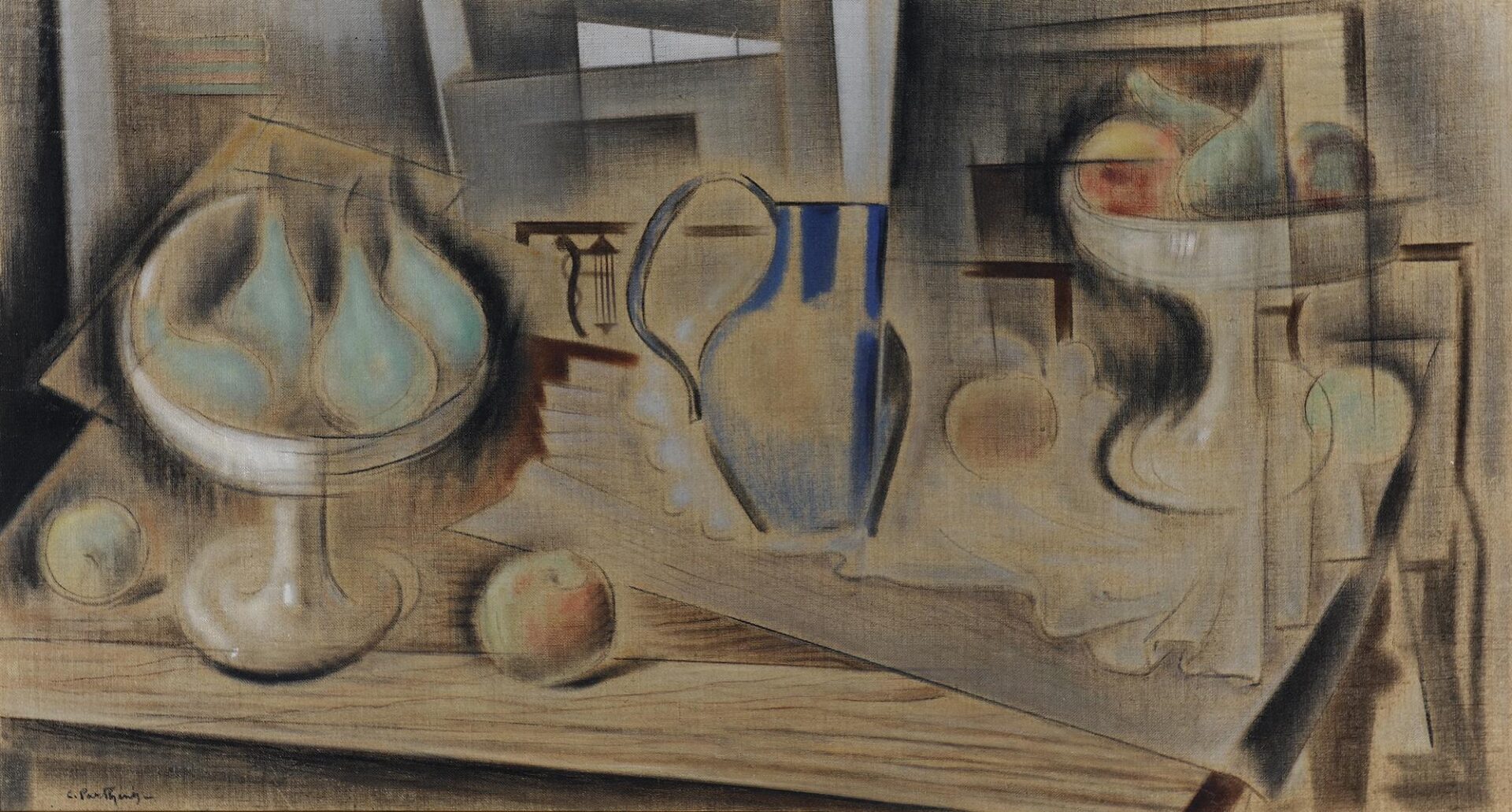
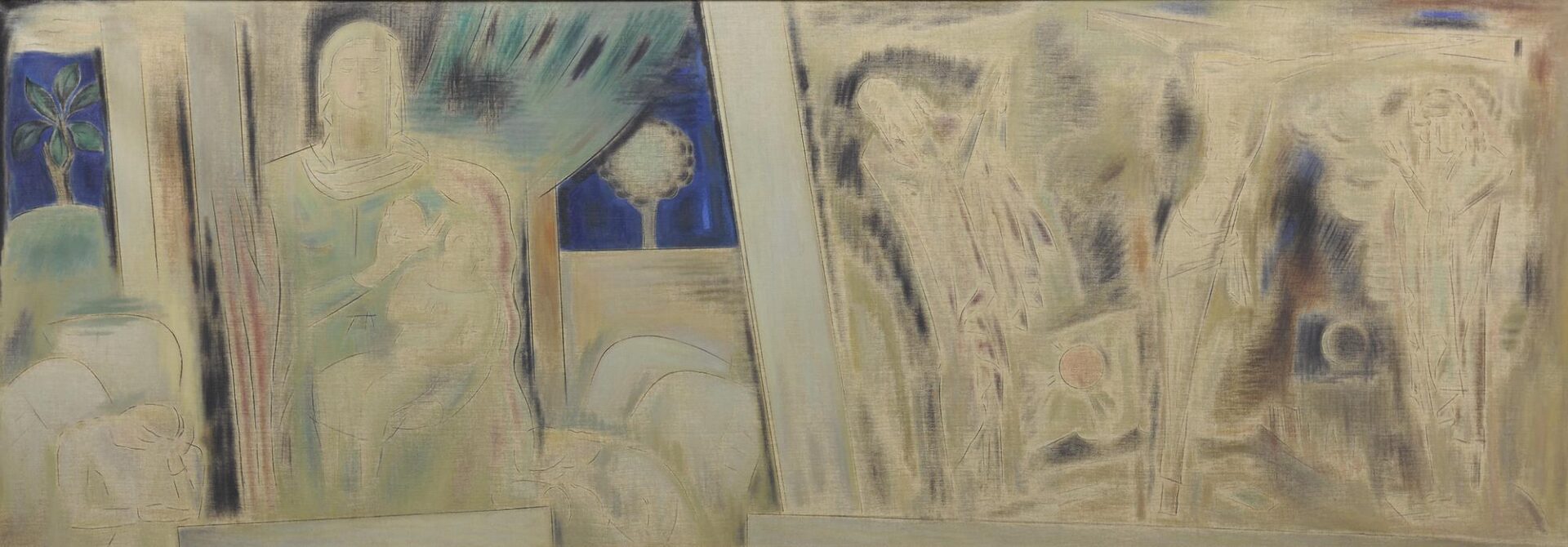
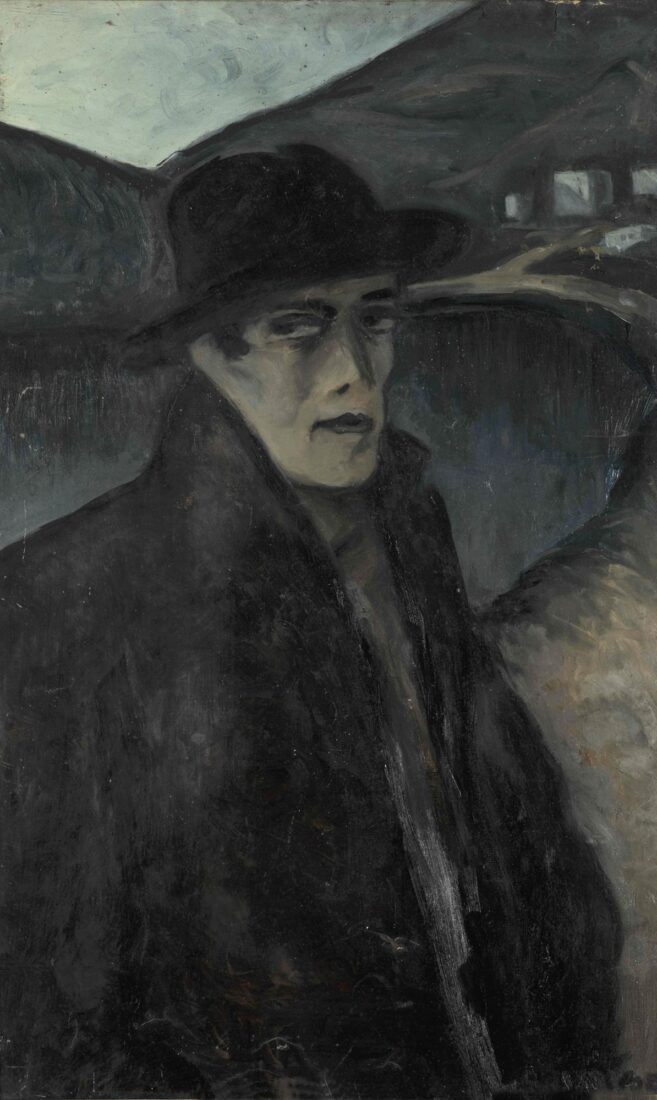
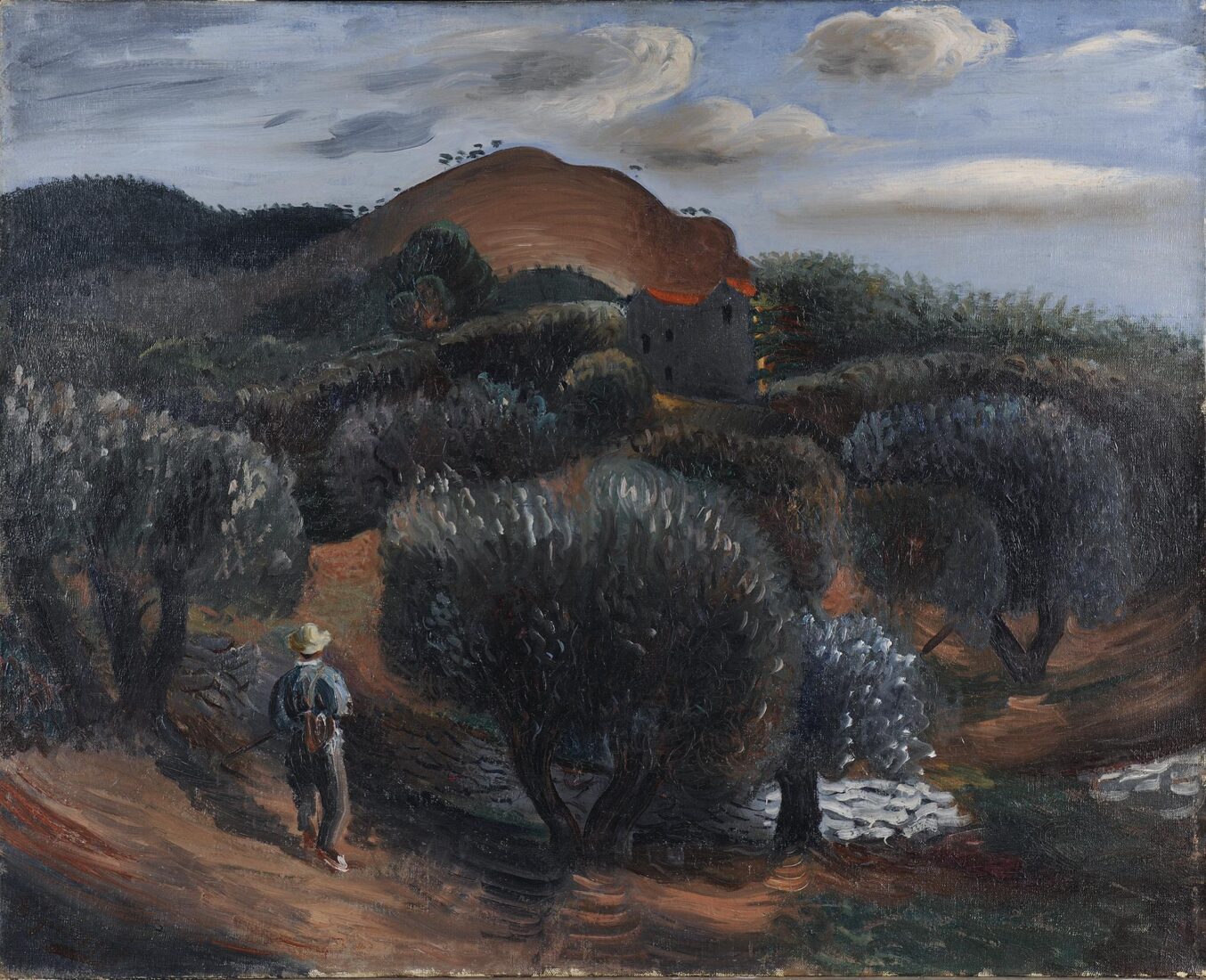
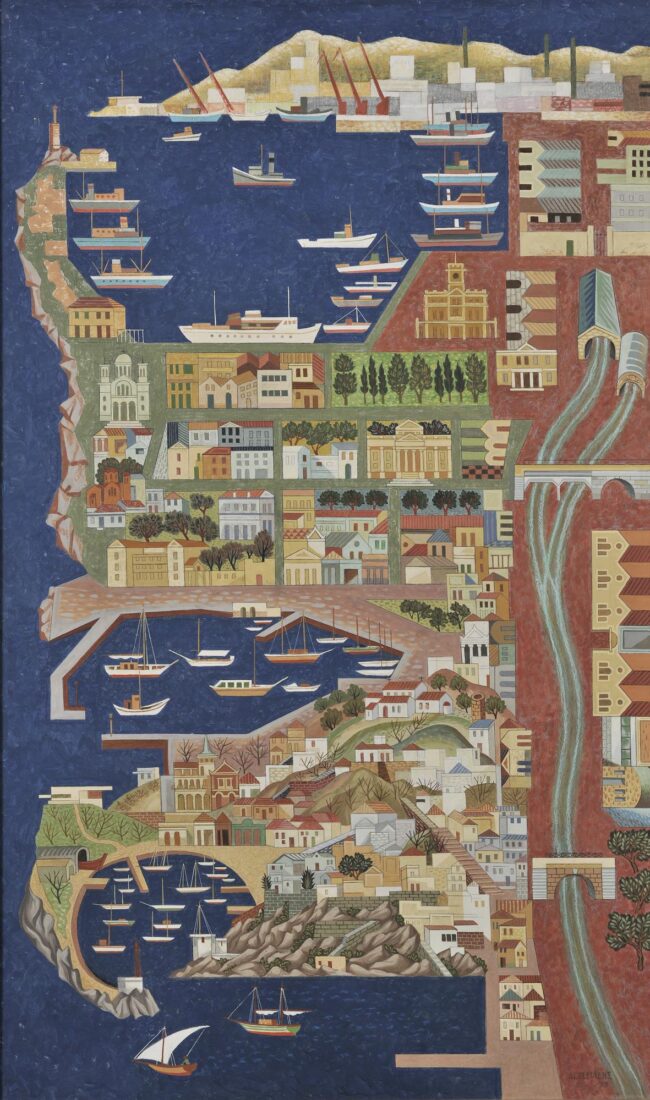
Aginor Asteriadis was a descendent of what is known as the Thirties Generation in Greek art. These particular artists espoused the ideological stand that the creation of an authentic Greek art form required a combination the lessons of tradition with the teachings of modern art. In the case of Asteriadis, tradition meant Byzantine art, which he’d studied as a hagiographer, as well as folk painting, on which he’d written several books.
His monumental composition, Piraeus, is highly typical of his practice and influenced by decorative folk art. The cartographical organization of the space does away with perspective and the third dimension. The subject is depicted vertically with the three harbors of Piraeus in ascending sequence from Mikrolimano and Zea to the main commercial port of Piraeus. All the compositional elements are stylized to the point that they become ornaments. The dark blue sea has a lively dialogue with the ochre tones of the earth, whereas the white houses add a joyful note to the composition, which is characterized by a strong melodic rhythm.
Similar compositions and chromatic arrangements are encountered in the Illustration of the Battle of Makrygianni by Panagiotis and Dimitrios Zografou.
